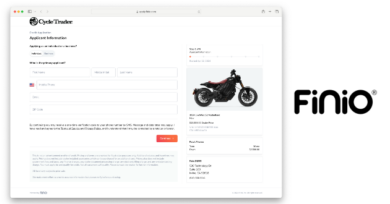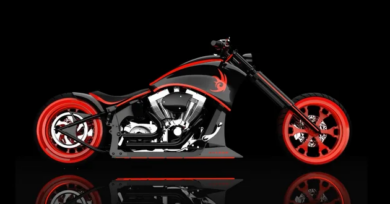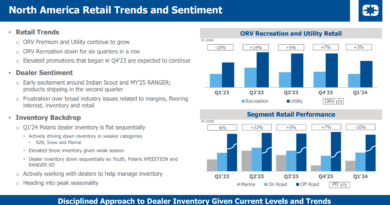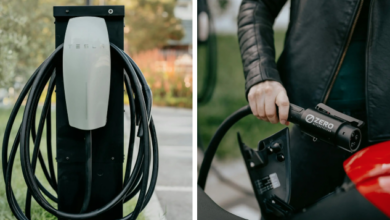Aim low: The search for the younger buyer
Potential customers who look up the Brothers Motorsports Web site are greeted by an image of 25-year-old snowmobile racer Levi LaVallee. LaVallee is showing off a new off-road motorcycle that he purchased from the Brainerd, Minn., dealership.
LaVallee isn’t featured by accident: It’s the dealership’s plan to increase appeal to a younger buying demographic. The kicker: Brothers does not even sell Polaris snowmobiles, LaVallee’s ride.
“We do it because we’re hoping that young people, whether they snowmobile or not, will relate to him,” said Steve Vandeputte, vice president and general manager for Brothers.
After holding steady at 41 for several years, the average age of a snowmobiler has increased to 44 this year, according to statistics gathered by the International Snowmobile Manufacturing Association (ISMA). Ed Klim, president of ISMA, says, statistically, the age increase isn’t cause for concern. Anecdotally, Klim says dealers he’s contacted say they’re primarily selling to an older demographic.
“I’ve noticed for years that the clientele keeps getting older and older,” Vandeputte said. “My gut feeling is people who buy snowmobiles are the ones who grew up snowmobiling. They’re the ones who keep coming back. But we’re not bringing new clientele into the market. Not a failure on the manufacturing side, they’re producing the product. Don’t know what we can do to get more people interested.”
That does not stop him from trying. Brothers, a Yamaha and Ski-Doo dealer, is trying to pinpoint the needs of a younger demographic, from its Web site to its in-season promotions. This past season, the dealership offered to pay the entry fees of Yamaha Phazers that entered into the Sport 85 class in United States cross country race events. It also offered contingency money for the class.
Vandeputte says the company advertised the race promo through direct mail, e-mail and via the Internet. He even supplied four snowmobiles for a particular race. The average age of the race participants: about 25.
“We got a lot of good exposure, but it’s too early to tell if it will make sales,” he said. “I’ve got a three-year game plan with this.” He’ll know his plan works if he sees an increase of sales in smaller-displacement, entry-level snowmobiles.
The younger demographic
The definition of “younger” varies from party to party, but most agree it includes the 20-year-old range up to about age 35. There’s also agreement this demographic is not likely to buy new.
“To me, personally, younger is 16-18, but that’s not a buying demographic,” said Wade West, marketing manager for Yamaha’s snowmobiling group. “We do need to get the upper teenagers into the sport. When they get in, if they carry it into their 20s, they may buy something used. But they will ultimately buy new products or parts to maintain the equipment they have. Or, they may step up and buy a new unit.”
“There’s a lot of competition for the recreational dollar,” said Steve Cowing, the competition and media director for Ski-Doo. “The question is where are the trends at right now? And the youth of today, what are they doing with their recreation time? Are they outdoors or indoors?”
In the past few model years, snowmobile manufacturers have introduced products geared to a younger demographic. Ski-Doo’s Freestyle was originally marketed to a young-teen to young-20s market; the Yamaha Phazer was meant to entice the 35-and-under group; the Polaris Shift hits the lower price-point buyer. Missing from Ski-Doo’s 2009 lineup is the Mini Z, which Cowing says was dropped due to declining sales.
“I think the manufacturers have done a good job with the Phazer and the Freestyle, but as the consumer gets older, they become more demanding and they want more technology,” Vandeputte said.
In some ways, the Freestyle was a bust. Once up to three models, it’s now down to one. “We may have missed the mark on [the Freestyle],” Cowing said.
This frustrates Vandeputte — not the product, but the lack of sales and overall interest.
“The Freestyle should have worked, but it didn’t,” he said. “And I’m very disappointed in the Phazer. I expected it to be huge numbers, and it’s not working at all — not in my market, anyway. I had very high expectations for it, probably the highest I’ve ever had for a new model.”
Interestingly, the Phazer might have hit the mark more than Vandeputte’s experience shows. According to West, the average age of all Phazer buyers is 38, and the average age of the base-package model is 26. He also says 16 percent of Phazer purchases are by first-time sled buyers, compared to the industry-wide 3 percent.
This means younger buyers might be entering the sport via used machines. “Quite honestly, if you’re entering the sport, what are you going to buy? A low-horsepower sled for $6,000 or a 600cc used sled for $4,500? If you’re a 25-year-old male, you’re going to buy used,” Cowing said.
Cost is a definite barrier to entry for 20-somethings. That’s something Ed Markum, head of sales for Dan’s Polaris in Houghton, Mich., notices, as the dealership is in a college town.
“Our customer is typically the guy with a little more income, which is generally an older person,” he said. He says the grads he often sees are priced out of a snowmobile purchase, in part because they’re spending money on other things. He’s had better luck selling used or noncurrent machines to this age group.
This year, for the first time, Klim tried to gauge used-buyer behavior when gathering seasonal statistics. The question: Was your first snowmobile purchase a new or used model: The result: 70 percent of respondents bought used. “That’s a big number,” Klim said. “What it tells me is the used market is a good way to break into the 25-year-old crowd. It’s something they can afford.”
Klim’s own daughter fits into the model. “She’s your typical 28-year-old,” he said. “She wanted a machine, and bought used. She paid $2,000 for it,” he said. “They don’t have the money to buy an $8,000 sled. Maybe we should spend some time telling these people there is a used market. We really just want to get them into the sport. If they have a good time, they are going to buy again and again.”
The staff at Dan’s Polaris sees younger riders as an investment, Markum said. The dealership does some out-reach, helping the local Michigan Tech University snowmobile club, working at various races or volunteering with snowmobile safety classes.
“That’s just a little bit of what we do for the college,” Markum said. “At least they see us out there helping out. It puts us in their minds for when they are ready to buy a new machine.”
It’s paid off. Markum says he has several customers outside of the dealership’s sales range who became familiar with Dan’s during their college years.
Understand the generations
The American workforce breaks down into four distinct demographics, each with its own attitude and value set, says Dee Dee Raap, a communications consultant with JourneyWorks, a marketing firm in Sioux Falls, S.D. The groups are seniors, Baby Boomers, Gen X and Millennials/Gen Y. Sales and marketing technique vary from group to group.
In order to attract Gen X customers (ages 29-44) and millennials (28 and younger), dealerships might need to adjust their sales and marketing approach. As a general rule, Gen Xers want to know “what’s in it for me” and Millennials are into social marketing and awareness.
Dealers need to make the experience “real” to younger clientele, she says. For example, a big-screen television playing snowmobile videos shows helps these age groups understand the snowmobile experience — and shows the dealership is tech-savvy, Raap says. Dealers also can show their social awareness side by sponsoring a ride for Iraq war veterans and their families or showing their dedication to the environment.
Competence with modern communication methods is vital, Raap says. “Gen X grew up learning computers, Millennials grew up with computers,” she said. “You need to talk the language of the people you’re targeting.” For Gen X, it means e-mail and Web sites; for Millennials, it also includes short soundbites, text messaging and Facebook, she says.
“If I’m a dealership, I’m going to want to capture the e-mail address of every person who walks through that door, and then communicate to them with high-value content,” she said. “A good idea is for a dealership to partner with tourism and send out e-mails with riding, destination and maintenance tips.”
Another way to engage Millennials is with a blog, she says. “But realize that they can sniff out a phony a mile away. If the blog is only about selling them something, they will go somewhere else,” she said. “Millennials are into the authentic; they won’t tolerate stuff that isn’t real. They’re not into hype. They’re into what the product will really do, and how they can benefit from the experience.”
Raap says dealerships should look for someone in the target age group with marketing experience to help craft the right message. The younger generations come into dealerships fully armed with product information, often gathered on the Internet. Salespeople can’t blow smoke at them, Raap says. “They have to do what it takes to have their message packaged — with the soundbite — but with the depth these buyers need.
“Dealerships need to be optimistic,” Raap said. “There are 60-80 million Gen Yers coming up. You drive by a lake, still see a lot of motorboats, a lot of Sea-Doos. People are not losing the desire to be out on machines. We just need to transfer that interest to snowmobiles.”




